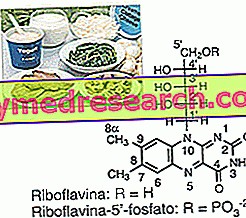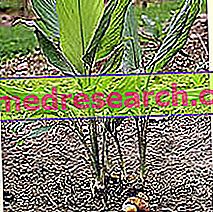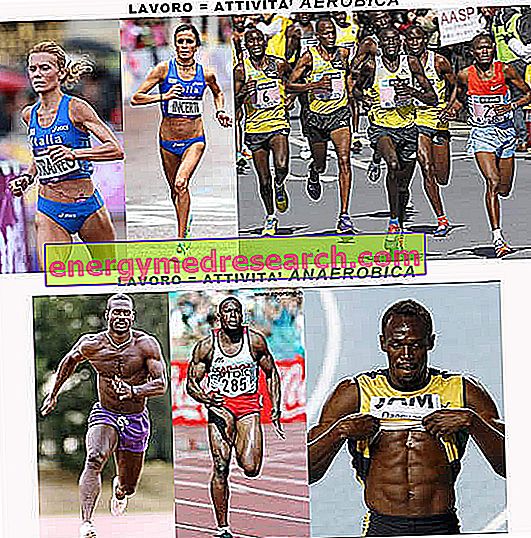Chemical Structure
Riboflavin synthesis was performed by Kuhn and Karrer in 1935.

The metabolically active forms are flavin mononucleotide (FMN) and flavin adenin dinucleotide (FAD), which act as prosthetic groups of redox enzymes, called flavoenzymes or flavoproteins.
None of the riboflavin analogues has significant experimental or commercial importance.
Absorption of Riboflavin
Riboflavin is ingested in the form of coenzyme and gastric acidity together with intestinal enzymes determine the detachment of enzymatic proteins from the FAD and from the FMN releasing the vitamin in free form.
Riboflavin is absorbed by ATP-dependent specific active transport; this process is saturable.
Alcohol inhibits absorption; caffeine, theophylline, saccharin, tryptophan, vitamin C, urea decrease their bioavailability.
In enterocytes a good part of riboflavin is phosphorylated at FMN and at FAD in the presence of ATP:
Riboflavin + ATP → FMN + ADP
FMN + ATP → FAD + PPi
In the blood, riboflavin is present both in free form and as FMN and is transported linked to different classes of globulin, mainly IgA, IgG, IgM; it seems that several proteins capable of binding the flavins are synthesized during pregnancy.
The passage of riboflavin in the tissues occurs by facilitated transport, at high concentrations by diffusion; the organs that contain the most are: liver, heart, intestine. The brain contains little riboflavin, however its turnover is high and its concentration fairly constant regardless of the contribution, which suggests a homeostatic regulation mechanism.
The main way of eliminating riboflavin is represented by the urine where it is found in free form (60 ÷ 70%) or degraded (30 ÷ 40%). In view of the reduced deposits the urinary excretion reflects the degree of intake with the diet . In the faeces there are only low quantities of degraded products (less than 5% of an oral dose); most of the fecal metabolites probably come from the metabolism of the intestinal flora ..
Functions of Riboflavin
Riboflavin as an essential component of FMN and FAD coenzymes participates in the oxidation-reduction reactions of numerous metabolic pathways (carbohydrates, lipids and proteins) and in cellular respiration.
Flavin-dependent enzymes are oxidases (which in aerobiosis transfer hydrogen to molecular oxygen to form H2O2) and dehydrogenase (naerobiosis).
Oxidases include glucose 6 P dehydrogenase, containing FMN, which transforms glucose into phosphogluconic acid; D-amino acid oxidase (with FAD) and L- amino acid oxidase (FMN), which oxidize aa in the corresponding ketoacids and xanthine ossididases (Fe and Mo), which intervenes in the metabolism of purine bases and transforms hypoxanthine into xanthine and xanthine in uric acid.
Important dehydrogenases, such as cytochrome reductase and succinic dehydrogenase (containing FAD), intervene in the respiratory chain, which couples the oxidation of substrates to phosphorylation and ATP synthesis.
Acyl-CoA-dehydrogenase (FAD dependent) catalyzes the first dehydrogenation of fatty acid oxidation and a flavoprotein (with FMN) serves for the synthesis of fatty acids starting from acetate.
A-glycerophosphate dehydrogenase (FAD dependent) and lactic acid dehydrogenase (FMN) intervene in the transfer of reducing equivalents from the cytoplasm to the mitochondria.
Erythrocyte glutathione reductase (FAD dependent) catalyzes the reduction of oxidized glutathione.
Deficiency and toxicity
Human ariboflavinosis, which appears after 3 to 4 months of deprivation, begins with a general symptomatology consisting of non-specific signs, detectable also in other deficient forms, such as asthenia, digestive disorders, anemia, growth retardation in children.
Followed by more specific signs such as seborrheic dermatitis (hypertrophy of the sebaceous glands), with finely grainy and greasy skin, localized especially at the level of the nasal labial furrows of the eyelids and the lobes of the auricles.
The lips appear smooth, bright and dry with fissures that radiate like a fan starting from the labial commissures (cheilosis); angular stomatitis.
The tongue appears swollen (glossitis) with a reddish tip and margins and centrally whitish, in the initial phase, subsequently hypertrophy occurs mainly on the fungiform papillae (granular tongue); sometimes the tongue has the cast of the upper dental arch and the presence of cracks first light and subsequently marked (geographic or scrotal tongue), then follows an atrophic phase (peeled and scarlet tongue) and finally magenta purplish red tongue.
At the ocular level there is angular blepharitis (palpebrite), ocular changes (photophobia or tearing, burning eyes, visual fatigue, decreased vision) and hypervascularization of the conjunctiva that invades the cornea forming an anastomosis with a concentric network; this occurs due to lack of the dependent FAD enzyme which allows nutrition and corneal spraying by imbibition.
Vulvar and scrotal dermatoses can also be highlighted.
The administration of riboflavin at high doses even for prolonged periods does not cause toxic effects, since intestinal absorption does not exceed 25 mg and because, as demonstrated on the animal, there is a maximum limit to tissue accumulation mediated by protective mechanisms.
The poor solubility in water of riboflavin prevents the accumulation also in parenteral administration.
Feeders and recommended ration
Riboflavin is widely distributed in foods of both animal and vegetable origin, where it is present mainly linked to proteins such as FMN and FAD.
Foods rich in riboflavin are, however, relatively few and precisely: milk, cheese, dairy products, offal and eggs.
For the same reasons seen for thiamine, also for riboflavin the recommended ration is expressed according to the energy consumed with the diet.
According to the LARN, the recommended ration is 0.6 mg / 1, 000 kcal, with the recommendation not to fall below 1.2 mg in the case of adults with an energy intake of less than 2, 000 kcal / day.



